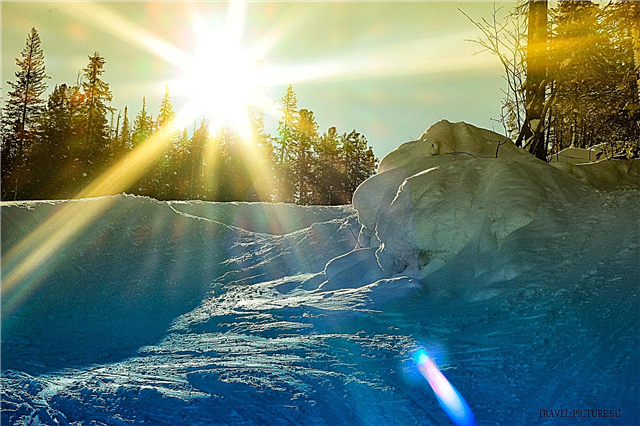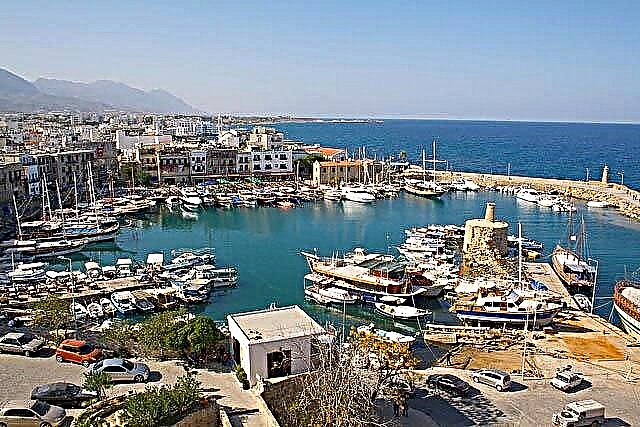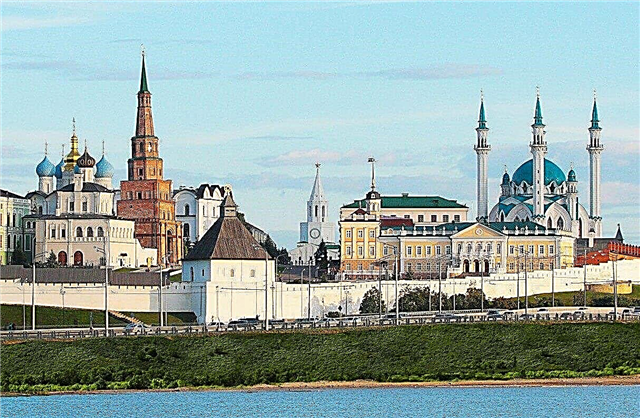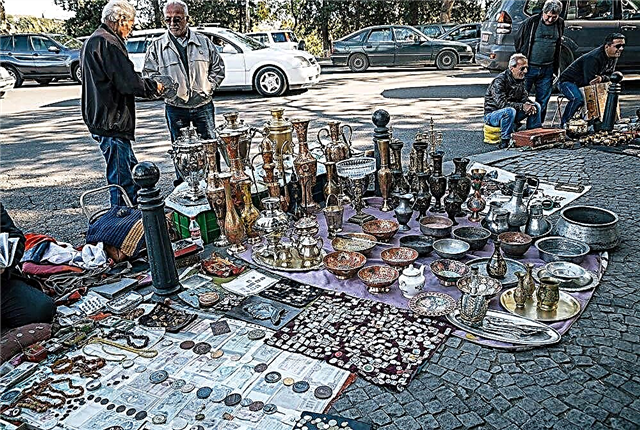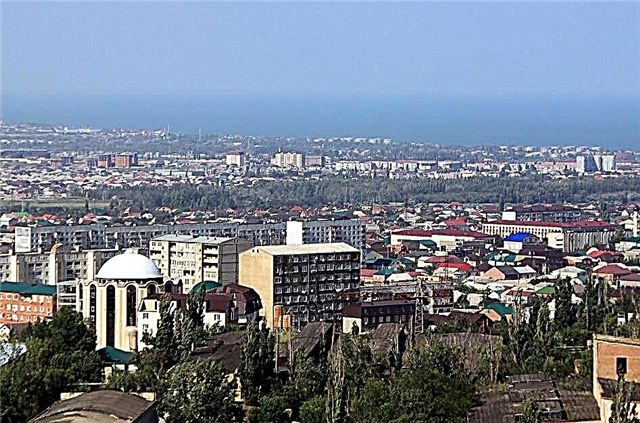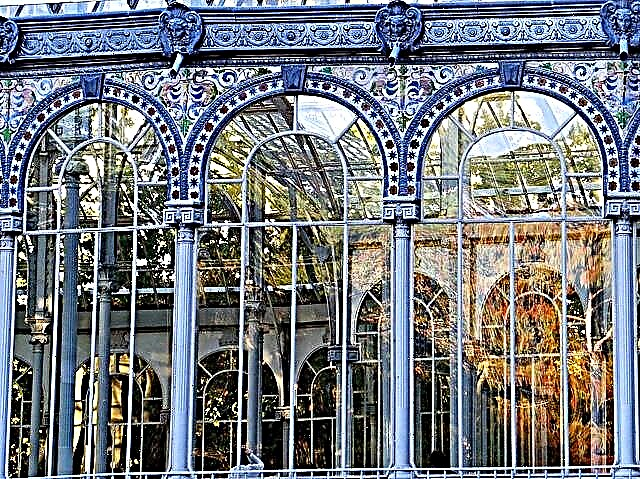Tver is an old Russian city. Many old buildings have survived in its historical center - the Travel Palace, the White Trinity Church, and the Nativity of Christ Monastery. Many architectural masterpieces were created during the large-scale development of the city after the great fire of the 18th century. The city has a layout typical of Rome, Paris and St. Petersburg. Lenin Square, Sovetskaya and Trekhsvyatskaya streets have a special place in urban architecture.
There are many museums in the city. The most visited is the United Museum of Tver, which has several dozen branches. Interesting museums with unusual themes - the Museum of Communications and the Museum of Tver Life. Even industrial enterprises offer guests unique excursion programs - for example, the Afanasy holding acquaints visitors with the main stages of cheese and beer production.
The most interesting and beautiful places
List, photo with names and descriptions of popular sights of the city. It contains the main objects of tourist interest. The list will help you plan your sightseeing itinerary in 1-3 days.
City garden
A popular place for local residents' leisure and tourist walks. Founded in 1931, the garden now looks quite modern. Clear landscape zones have been allocated, shady alleys have been arranged, benches have been installed, and beautiful flower beds have been planted. The most interesting part of the garden looks like the former Palace. It contains copies of statues of antiquity, flowerpots with flowers. There are cafes and attractions.
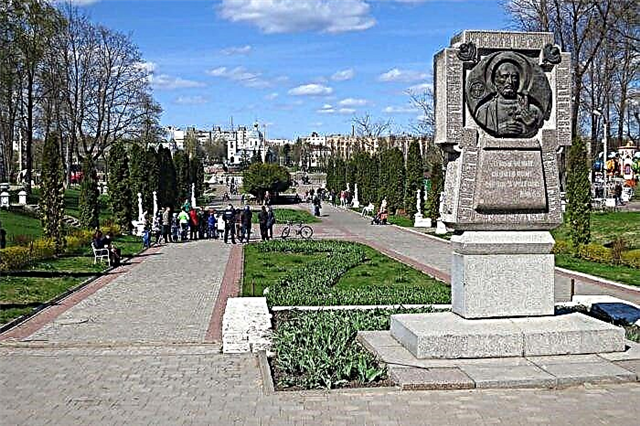
For all the top places in the region, see: the main attractions of the Tver region.
Tver Imperial Traveling Palace
The luxurious mansion was built at the end of the 18th century in the place where the Petersburg highway passed. Its facade faces the banks of the Volga. The palace was rebuilt several times, supplemented with details of different architectural styles - classicism and baroque. The interior is decorated with marble columns and fireplaces, expensive furniture and impressive crystal chandeliers. The regional art gallery is currently located inside its walls.

Afanasy Nikitin Embankment
The length of the embankment on the left bank of the Volga is 2.5 km. The pedestrian zone is separated from the water by a small green slope. The embankment is decorated with tree plantations, lawns, beautiful flower beds and decorative figures. Benches and lanterns are installed. There is a fountain of several bowls near the Novovolzhsky bridge. The Nikitin embankment offers a good view of the City Garden, architectural monuments and sights.

Stepan Razin Embankment
The embankment on the right bank of the Volga is named after the famous Don Cossack. It is one of the favorite walking places for city guests and townspeople. The embankment stretches from the City Garden to the stadium. Many sights of Tver are clearly visible from it - Zavolzhsky Park, St. Catherine's Monastery, River Station, mansions of different styles and eras. The upper part of the embankment runs under the canopy of trees.

Tryokhsvyatskaya street
A beautiful and well-maintained street, which is often compared to the Moscow Arbat. The street is pedestrianized; there are many souvenir shops, cafes and restaurants on it. Here you can see street musicians and artists, festivities and festivals take place. Most of the buildings on Tryokhsvyatskaya Street are low-rise mansions of the 19th century in the classical style. The modern building of the Olympus complex stands out among them.
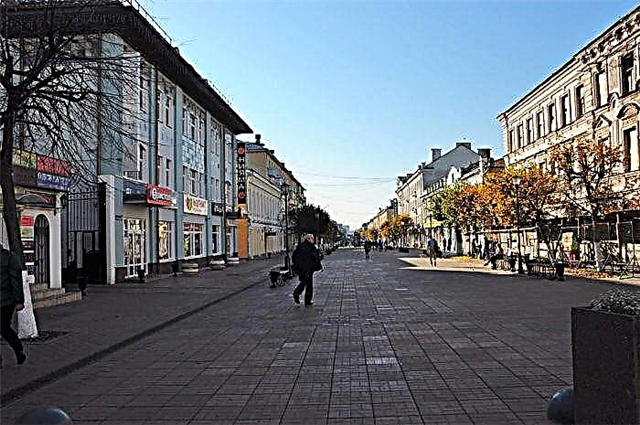
Memorial complex of the Great Patriotic War
Located near Victory Square on the site of the Church of St. Nicholas the Wonderworker, blown up in the 1960s. The complex was built in 1970. Its dominant feature is the Victory Obelisk 45 meters high. It is located on a monumental foundation with bas-reliefs, in front of the obelisk there is a bowl with the Eternal Flame. The structure has external illumination, and the torch itself is lit several times a year, during similar events.

Sovetskaya street
It is considered the main street of the city. The old street was designed in 1763; its development took place in the late 18th and early 19th centuries. It passes through the historical center of Tver; many buildings on it have the status of an architectural and historical monument. They house government organizations and cultural institutions. The most interesting are the Travel Palace, the Tver United Museum, and the Tver Drama Theater.

Monument to Mikhail Krug
A bronze monument to the famous singer and native of Tver is erected on Radishchev Boulevard. He is depicted sitting on a bench and leaning on a guitar between his legs. There is free space on the bench to sit down and take a photo. Installed in 2003 after the death of the singer. Twice the monument was attacked by vandals - hooligans cut off a guitar at the monument, and a few years later painted the monument in different colors.

Recommended: 30 of the most interesting monuments of Tver.
White Trinity Church
Orthodox church, which is an architectural and cultural monument. Founded in 1564, it is the oldest surviving stone structure in Tver. The church was built of bricks and white stone, the domes and the roof are covered with white tiles. Initially, the church was three-domed, but later it was expanded to 7 chapters, a two-tiered bell tower was added. The walls inside are painted with frescoes of the 18th-19th centuries.

About active churches: 25 main temples of Tver.
Tver State United Museum
Founded in 1866 and consists of several branches. The main building of the museum is located on Sovetskaya Street; it is a city architectural monument. Its expositions tell about the history of the region - from the Paleolithic times to the present. The thematic halls house exhibitions of flora and fauna of the Tver region, its natural resources, showing the peculiarities of folk crafts, the development of industry.

Tver Academic Drama Theater
Located in a monumental building with imposing Stalinist columns. The history of the theater goes back almost 300 years - it was created in 1745. The title of Academic Theater was received in 1995. The theater's repertoire is dominated by performances based on classical foreign and Russian literature. The theater troupe successfully tours not only in the cities of Russia, but also abroad, participates in festivals and competitions.

Nativity of Christ monastery
The exact date of construction is unknown. It was first mentioned in documents in 1514. The main buildings of the monastery remained wooden until the beginning of the 19th century, when the ensemble of the monastery was rebuilt in stone and received the features of first classicism, then Empire style. The restoration of the monastery damaged during the Soviet era began in the 20th century. The monastery includes several cathedrals and churches, outbuildings.

Architectural landmarks of Tver
The most interesting buildings and structures, beautiful infrastructure and urban planning.
Cinema "Zvezda"
Built on the site of the house of Peter I on the banks of the Volga. The building of the cinema was opened in 1937 and is an architectural monument in the style of late constructivism. Its main entrance and side facades are decorated with white columns, giving the cinema a solemn and imposing appearance. Several cinema halls have a capacity of up to 250 people. There is a premium hall and a hall with VIP boxes. All rooms have modern equipment.

House of Voroshilov riflemen
An architectural monument of the Stalin era. The five-storey building was built in 1935 in the style of pre-war neoclassicism. It is decorated with the coats of arms of the USSR, stylized red stars. The house housed military institutions - the headquarters of the district, an institute, a hospital, an academy.The elements of the decoration retain the features of the original pre-war interior. The house of Voroshilov riflemen fits perfectly into the unified architectural appearance of the street.

Old Volzhsky bridge
The first bridge in Tver, across the Volga. His project was developed in St. Petersburg. The construction of the bridge was completed in 1900. Steamships could pass under the high bridge. The restoration of the bridge after the explosion in 1941 began in 1947, and a large-scale reconstruction took place in the 1980s. Openwork spans from the old bridge were installed on a more solid structure. The width of the roadway was increased to 8 meters.

New Volzhsky bridge
The concrete bridge across the Volga was built in the 1950s using cast-iron spans from the Leningrad bridges - the Lieutenant Schmidt Bridge and the Blagoveshchensky Bridge of the 19th century. The total length of the bridge is 485 meters, the length of the bridge itself without approaches is 281 meters. The five-span bridge has a height of 15.5 meters above the water. Each span has 9 arches. There are two car lanes and tram tracks across the bridge.

Lenin Square
One of the former names "Octagonal" is derived from the shape of the square. The total area occupied by it is almost 12,000 m². The original view of Lenin Square was formed in the 1760s by the project of the architect Nikitin. The ensemble of its constituent historical buildings is a federal cultural monument. On the square there is a mass grave of Soviet soldiers, a monument to Lenin.

Yard of the Proletarian
Also known are the names Morozovsky yard or Morozovsky barracks. This is a complex of buildings for public and industrial purposes, built for the workers of the manufactory. The microdistrict has historical and architectural value. The buildings were erected in the Art Nouveau and Russian pseudo-Gothic style. The elements of the external facade are of the neo-gothic style. The town planning object was built from 1858 to 1913. In total, it includes 50 buildings.

Berg's Christmas Manufactory Barracks
They are three houses built for factory workers. Erected alternately in 1901, 1904 and 1905. Project architect - Karl Schmidt. Identical buildings have a Gothic style. The end facades of the barracks-houses are interestingly decorated - glazing of staircases and large windows, which form the shape of the staircase, are used. The name of the barracks is given by the name of the owner of the manufactory V.P. Berg.

House of the Nobility Assembly
Located in the historic center of the city. The building is also known as the Officers' House. It was erected in the middle of the 19th century at the initiative of the nobles for holding meetings. The architect Lvov completed the project of a two-story house with a mezzanine in the style of late classicism. Columns with stucco moldings and caryatids have been preserved in its solemn ceremonial hall. After 1917, the premises of the building were given to the needs of the officers of the Red Army.

Tverskoy river station
Located on a small hill at the confluence of the Volga and Tvertsa rivers. The river station began to function in 1938, water communication continued until 1981. After that, for almost 10 years, the building was not used in any way, later it housed an art center and two museums. After the partial collapse of the walls of the river station, its reconstruction began. From May to September, you can go on a boat trip from the docks at the river station.

Churches and temples of Tver
Places of worship, the main Orthodox, Muslim and Catholic sights.
Church of the Three Confessors
Built in 1731. It had several thrones, a high bell tower. During the years of Soviet power, part of the bell tower was destroyed, as well as unique frescoes inside the church. The restoration of the church began after its return to believers in 1996. Its architecture combines several styles - Empire, Baroque and Classicism. There are sculptures of angels in the niches of the walls. The interiors look very bright due to the large windows.

Ascension Cathedral
The cathedral was founded in the middle of the 18th century on the site of burnt down wooden churches. The bell tower at the cathedral appeared only in the 19th century. In 1935, by order of the Soviet government, services in the cathedral were stopped, and the building itself was used for several years for the needs of the local history museum. In the 1990s, the building was returned to the church, and since 1994 the cathedral has been the end point of the Orthodox procession with the icon of the Tikhvin Mother of God.

St. Catherine's convent
Founded in 1996, earlier it was the courtyard of the Ascension Orshin monastery. It is located in an incredibly picturesque place on the banks of the Volga. On the territory of the monastery there are two chapels, the Church of St. Catherine and two attributed churches. Restoration work is underway in the churches, the bell tower has been restored. About 25 people permanently live in the monastery, about 100 people study in theological courses.

Church of Mikhail Tverskoy on the Island of Memory
Built in 2002. An unusual and picturesque place was chosen for the construction of the church - on the Memory Island at the confluence of the Tmaka and Volga rivers. The church was designed by Tver architects Andrei Barkovsky and Valery Kurochkin. It is made in the Vladimir-Suzdal style, which is traditional for Russian churches. The construction of the church is dedicated to the memory of the princes of Tver and Vladimir St. Mikhail Yaroslavovich Tverskoy.

Church of the Transfiguration of the Lord
Catholic temple, erected in 1864. Destroyed in 1974. The restoration of the temple on the historic site began in 1994 and lasted 8 years. The tall red brick building in the shape of a cross combines Gothic and Art Nouveau elements. A high belfry rises above the main façade. One side of the nave is decorated with a statue of the Mother of God, the other with the image of the Last Supper.

Tver Cathedral Mosque
It was opened with the permission of the provincial government in 1906 and worked until 1935. In 1992, the mosque was returned to the Muslim community. In 2008, with the support of the federal budget, the cathedral mosque underwent a large-scale reconstruction. It is made in the classic New Auritanian style. The minaret is located in a cylindrical tower with a height of 16.3 meters. One of the roofs is decorated with an oriental pattern.

Cultural landmarks of Tver
The most interesting museums that you should definitely visit.
M.E.Saltykov-Shchedrin Museum
Located in the center of the city, where Mikhail Evgrafovich lived for two years, working as vice-governor of Tver. The Memorial Literary Museum contains documents, photographs, manuscripts and books, as well as personal belongings of the writer. In total, the museum has about 800 exhibits. Guided tours, as well as literary meetings and evenings, exhibitions. Paintings by Russian artists were used in the interior design.

Museum of Tver Life
Located in the building of a former merchant estate built in 1974. The museum also includes two outbuildings, a barn, and a coach house. These are the only Baroque buildings in the city. The main theme of the museum's exhibitions is the life and culture of the city in the 18th-19th centuries. Visitors can view more than 800 exhibits with excursion services, participate in interactive programs, visit a gift shop.

Iskra Museum of Photography
12 showcases of the museum tell about the history of photography, from the first devices of the late 19th century to modern digital models. A rare collection of old photographs and rare cameras was provided to the museum by its director Roman Kakotkin. The tour is conducted by professional photographers. Various master classes are organized for visitors, for example, on developing film and photographing ancient buildings in Tver.

Museum of Communications of the Tver Region
Departmental museum, owned by the UFPS, which is dedicated to the history of post and telecommunications. It is located in the building of the Tver Post Office, erected before the revolution. The museum displays about 2000 exhibits - documents, telephones and telegraphs, photographs. Several excursion programs have been developed that tell both about the general history of the development of the postal service, and about individual industries.

Holding "Afanasy"
The history of the holding's development began with the founding of a private brewery. Now a variety of products are produced here - meat, fish, dairy, and snack foods. You can visit the brewery with a guided tour - see the stages of production and taste branded products. For families with children, they offer an excursion to the cheese dairy - to examine the cheese ripening chamber, taste the best varieties of cheese, and take part in master classes.

Monuments and monuments of Tver
The most notable and famous sculptures and monuments adorn the city.
Monument to Afanasy Nikitin
The monument to the traveler and writer is located on the embankment named after him. The statue is 4 meters high and is installed on a granite pedestal. The whole composition is placed on a round platform made in the form of a rook with a knight's head. The monument was unveiled in 1955, the ceremony was attended by the Ambassador of India - after all, Nikitin became one of the first Europeans to reach India on his travels across the seas.

Monument to Mikhail Tverskoy
Opened in 2008 on Sovetskaya Square. The author of the project is Andrey Kovalchuk. The artist depicted the Grand Duke on horseback. The height of the bronze monument is 8.5 meters. It is installed on a granite pedestal, which depicts a belt with Slavic ornaments and a bronze shield as a symbol of protection. The very image of Mikhail Tverskoy symbolizes the greatness of the spirit of man and statesman.

Monument to A.S. Pushkin
The poet often visited Tver and mentioned the city in his works. A monument in his honor was erected in 1974 in the City Garden in a picturesque place on the embankment overlooking the Volga. The poet is depicted in a frock coat and top hat, leaning in a relaxed pose on the grate, as if peering into the night distance. The sculptural composition designed by Komov is called "White Nights" and perfectly conveys the atmosphere of the 19th century.

Monument to submariners
Installed on the Nikitin embankment in 2010 by the project of Evgeny Antonov. The monument is made of bronze. He depicts two submariners - one of them is unconscious, and the second raises an insensitive comrade to the wheelhouse. At the rectangular pedestal there are cast-iron anchors with chains and granite slabs, which depict submarines - diesel, from the times of the Great Patriotic War, and modern nuclear ones.

Monument to the tank crew of Stepan Gorobets
Opened on Komsomolskaya Square in 2011. The sculptural composition is dedicated to the feat of the crew of Stepan Gorobets. All the busts of the memorial monument are portrait, they depict the commander, mechanic, gunner-radio operator and tower. The sculpture is installed on one of the streets of the city, which they defended from the invasion of the enemy during the Second World War. For the residents of the city, Stepan Gorobets became a symbol of the Russian unbending will.

Monument to I.A.Krylov
The monument is dedicated to the period of his life when the fabulist worked as a clerk in the provincial magistrate. The sculpture is installed in a public garden not far from the place where the writer lived and worked. The monument was opened in 1959 by the architect Donskikh. The sculptors are Shaposhnikov and Gorlov. The sculptural composition includes the monument to the fabulist and four steles depicting books with high reliefs based on Krylov's fables.

Family monument
The bronze composition dedicated to the family was opened in 2016. She depicts a happy married couple with two daughters and a son. The monument was erected near the circus, in the square where the fountain is located. The sculptures are made of cast bronze in full size. The height of the father of the family is about 180 cm. The sculptor of the project is Karen Sarkisov. Several people were invited to pose for the creation of the monument.

Stele "City of Military Glory"
Installed in honor of the conferment of the honorary title "City of Military Glory" in Tver. On the front of the granite column there is a cartouche with the text of the decree of the President of the Russian Federation, on the back of the column there is the coat of arms of Tver. The site with the stele is surrounded by four pylons with bas-reliefs of military events - the war of 1812, the battle of 1317, the battle with the Polish army and the liberation of the city from Nazi troops in the Great Patriotic War.

The best gardens and parks of Tver
The main places for walking and outdoor recreation within the city.
Botanical Garden of Tver State University
Located near the confluence of the Tvertsa River with the Volga. The unique garden contains a collection of steppe plants. It also contains unusual and exotic plants from all over the world. The garden area is 2.6 hectares. It houses 6 stock collections and 8 thematic expositions. In total, the Botanical Garden has planted about 350 species of shrubs and trees, as well as about 2000 herbaceous plants.

Bobachevskaya grove
Forest park zone with an area of 20.5 hectares, which is a natural monument. The forest in the grove is predominantly pine. The pines are 90 years old. The grove is inhabited by jackdaws, crows, magpies, rooks. Near the grove flows the Bread Stream, there is a pond. In the park area there are playgrounds, bike paths, cafes, a playground with carousels, there is a rental of sports equipment. In the grove there is a sanatorium of the same name of the Soviet times.

Victory Park
Founded in the historic center of the city in honor of the 30th anniversary of the Great Victory in 1975. The total area of the park is 11 hectares. Earlier on this territory there was a collective farm apple orchard. Now in the park there are spruce, thuja, birch, wild rose, chestnut, maple, apple, mountain ash, poplar. There is a memorial stone at the main entrance to the park. Alleys are laid throughout the park, the main alley leads to the Pantheon of Remembrance and memorial plaques.

Landscape park "Tmaka"
A popular vacation spot for local residents. This is a green, ennobled corner of nature within the city. There are many beautiful landscapes in the park, both natural and man-made. Many paths have been laid under the canopy of trees, benches are placed. For outdoor enthusiasts, there is a rope park of four tracks of different difficulty levels, bicycle rental and horseback riding.
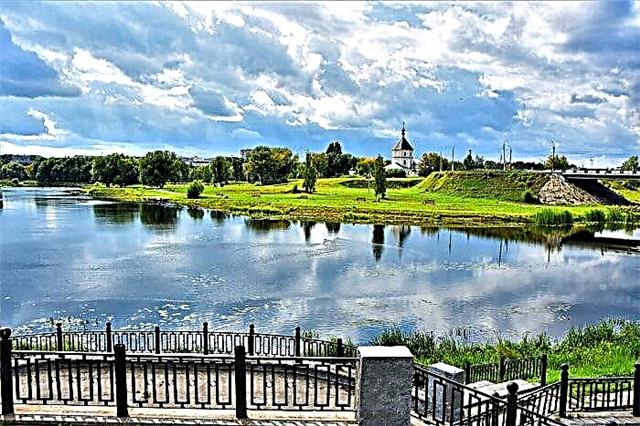
Konstantinovsky quarry
An artificial reservoir that arose on the site of a sand pit abandoned 30 years ago. It is 1.5 km long and 800 meters wide. The depth of the quarry is about 15 meters. The natural area next to the quarry is in good condition, so recreation in this place is popular among the townspeople of Tver. The entrance to the water is shallow, the shores are sandy. The clear water attracts many divers to a career as a training destination.


